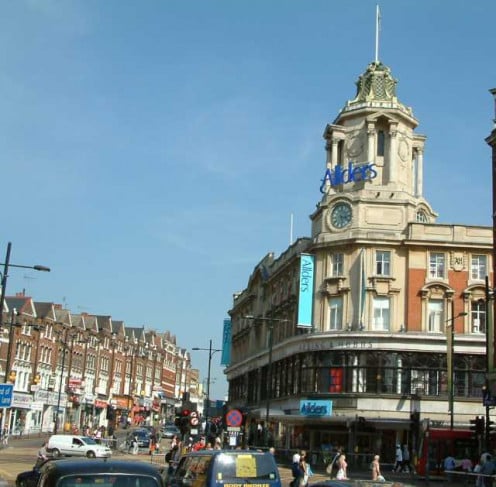- HubPages»
- Travel and Places»
- Visiting Europe»
- United Kingdom»
- England
Visiting Battersea, London: Close to Clapham Junction, A Skyline Dominated by the Allders Cupola, Dating From 1910


Edwardian Baroque on display
At the intersection of Lavender Hill and St, John's Road in Battersea (1) (today, in the London Borough of Wandsworth), a large store was opened by Henry Arding (1844-1918) and James Hobbs (1848-1908). Messrs. Arding and Hobbs had been in business since 1876. What was known as Arding and Hobbs Department Store, rising to 5 storeys, dated from 1884, but in 1909 a fire badly damaged the building, which led to considerable structural modifications by Architects Gibson, Skipwith and Gordon (2).
The crowning feature of the redesigned building is its conspicuous cupola. Characteristics of this feature include Edwarding styling, with a series of open pediments, and a clockface. The whole may be said to exude a pre-World War One prosperity and is a highly obvious part of the skyline in the vicinity of nearby Clapham Junction Station (4).
Interestingly, Mr. Arding was of the view that the proximity of Clapham Junction station would likely bring in much business, and this indeed proved to be accurate. (Indeed, the tower with its ornate cupola seems to send a subliminal message to travellers at Clapham Junction: "This is a place to travel to as well as through...")
Because the store has also been owned by Allders and by Debenhams, the famous cupola as been referred to by different names.
The building is recognized as a heritage structure. At night time it has often been traditional to floodlight the landmark tower with its cupola.
April 7, 2020
Notes
(1) Another well-known landmark in the skyline of Battersea is its disused 1930s Power Station; while images of the power station sometimes emerge in artwork as an iconic symbol of the pre-World War Two era, yet the Allders cupola can arguably be described as more photogenic!
(2) See also: http://stories-of-london.org/arding-hobbs-8/
(3) Architect J. S. Gibson is also known for the design of the Middlesex Guildhall, in Parliament Square, London.
(4) Opened in 1863, Clapham Junction Station grew enormously to the extent that it now sees between 100 and 180 trains per hour, during most hours of the day. It is the only station in the United Kingdom with more interchanges than entries or exits. It is thus unremarkable that huge numbers of passengers, as they typically pass through Clapham Junction Station twice per day, are aware of the prominent Allders cupola. This was my own custom also for a number of years; and then when I attended a wedding at a church building within walking distance of Clapham Junction Station, it felt a slightly odd experience to be travelling to — rather than through — the station.
Some sourcing: Wikipedia

Also worth seeing
London has such huge numbers of visitor attractions that I will refer to only a small fraction of the principal ones; these include: Trafalgar Square; the Houses of Parliament at the Palace of Westminster; Westminster Abbey; St. Paul's Cathedral; the Royal Albert Hall; and many others.
...
How to get there
United Airlines flies from New York Newark Airport to London Heathrow Airport, where car rental is available. Underground and train services link Heathrow Airport with Central London. Clapham Junction Station has fast links to Waterloo and Victoria and Gatwick Airport Stations, among many others. Please note that some facilities may be withdrawn, without notice. You are advised to check with the airline or your travel agent for up to date information.
MJFenn is an independent travel writer based in Ontario, Canada

Other of my hubpages may also be of interest
- Visiting Selfridges, London, England: Beaux-Arts, Pillared Splendour With Art Nouveau Features, Dati
The pillared spendour of Selfridges, at 400 Oxford Street, London, England, is associated with some interesting World War Two history. The building was designed by Daniel Burnham, and dates from 1909. - Visiting Canada House, London, England: Splendid, Canadian Hub on Historic Trafalgar Square
This Greek Revival building by Sir Robert Smirke, facing London's famous Trafalgar Square, dates from the early 19th century, but for many decades has had a remarkable historic association with Canada








